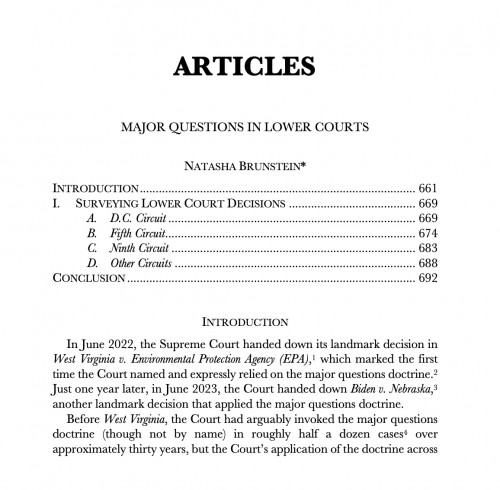In June 2022, the Supreme Court handed down its landmark decision in West Virginia v. Environmental Protection Agency (EPA), which marked the first time the Court named and expressly relied on the major questions doctrine. Just one year later, in June 2023, the Court handed down Biden v. Nebraska, another landmark decision that applied the major questions doctrine. Before West Virginia, the Court had arguably invoked the major questions doctrine (though not by name) in roughly half a dozen cases over approximately thirty years, but the Court’s application of the doctrine across these cases bore little in common.
Legal scholarship rightfully criticized the Court’s inconsistency and the doctrine’s overall lack of clarity, which allowed litigants to construe the doctrine in surprising ways. In West Virginia, the Court had the opportunity to articulate a clear and workable framework of the doctrine to guide lower courts and litigants. Although one could read West Virginia as an attempt to provide such guidance to lower courts, it is far from a model of clarity. This Article surveys how lower federal courts have interpreted West Virginia and applied the major questions doctrine.
There is no one major questions doctrine in the lower courts. Judges have taken vastly different approaches to defining and applying the doctrine both within and across circuits. These differences illustrate that many judges may view the doctrine as a little more than a grab bag of factors, which they seem to be choosing from at their discretion. Lower court judges do not appear to be constrained in how they apply the doctrine. In a majority of cases concerning Biden Administration agency actions and executive orders, judges applied the doctrine to reach outcomes that aligned with the political party of their appointing President.v

